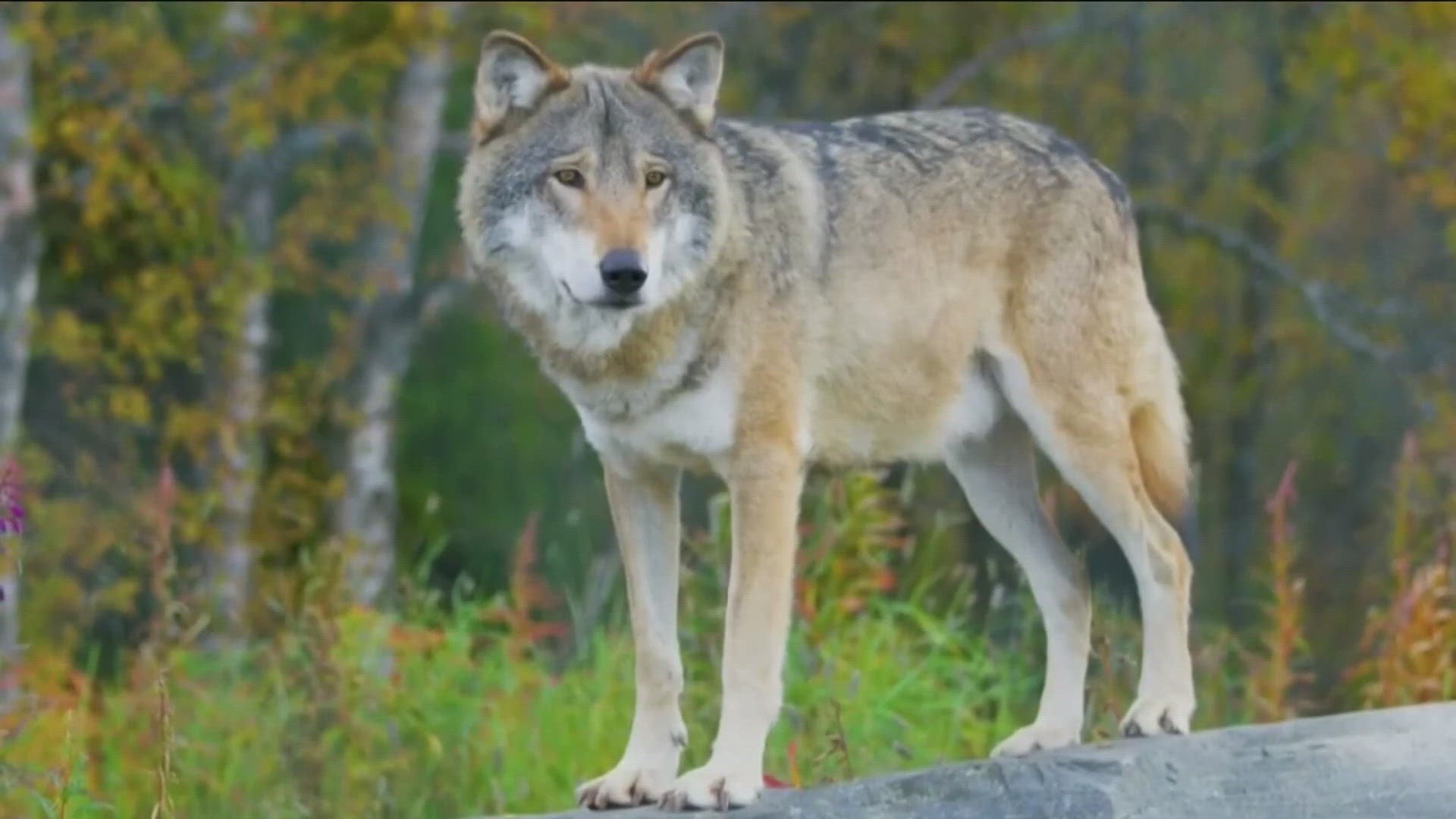IDAHO, USA — Idaho's Fish and Game Commission unanimously passed a new wolf management plan in early May, hoping to gradually cut the state's wolf population by about 60%.
Currently, about 1,300 wolves live around the Gem State. Roger Phillips, Fish and Game spokesperson, said they are trying to bring that number down to 500 based on what the U.S. Fish and Wildlife Service recommended when wolves in Idaho were removed from the Endangered Species list.
"This [plan] really outlines how we manage wolves and how they fit in with other game animals and other species in the state, like livestock," he said.
Phillips said reducing conflict between livestock and wolves was the catalyst for passing a new plan. Since 2014, wolves have killed nearly 1,300 livestock from about 300 producers.
Data also shows wolves killed 289 livestock from July 1, 2021, to June 31, 2022. Cameron Mulroney, Idaho Cattle Association vice president, said he is less concerned about the actual "goal number" Fish and Game has in mind.
He just wants results.
"Reducing conflicts and making sure that [wolves] are part of the environment but not overburdening our industry, that's our main goal," Mulroney said.
Livestock kills take a toll on ranchers, he said. There are financial repercussions as well as emotional.
Mulroney said he understands why managing wolves is controversial but thinks Idahoans should look at it from a rancher's point of view.
"Sometimes people don't fully understand the emotional connection that that producers have with that animal," Mulroney said. "A loss of it when it's unplanned and maybe even as gruesome as sometimes it can be in depredations, it's hard on a producer."
Ranchers are compensated if a wolf kills their livestock. But he said it is harder to confirm a "true kill" than expected. There is a lot of grey area if the livestock is not found almost immediately.
Not everyone is on board with the new plan, including conservationist Dallas Gudgell with the International Wildlife Coexistence Network. Gudgell said killing wolves is never the answer.
While there are non-lethal methods mentioned in the plan, most of it revolves around hunting and trapping. There are no limits on how many wolves people with a license can kill.
"We do not need lethal takes," Gudgell said. "If you're out on the land with flags, fox lights monitoring, heard dogs ... those are the best non-lethal methods, and they're easy."
Gudgell said there are other examples of successful and non-lethal wolf management plans, like the Wood River Wolf Project. He thinks the project is a "perfect" blueprint.
"There's 16 years of data," he said, "20,000 sheep out there on the land with wolves coexisting, and the conflicts are so minimal. Those sheep and the livestock in that area where the wolves live are all non-lethal."
He thinks Fish and Game's new plan should exhaust all non-lethal options before killing a wolf. More than that, Gudgell said wolves are a special part of Idaho's ecosystem.
Taking them away, he believes, takes away part of the state's wow factor.
"When people come to visit Idaho, they want to see wolves," Gudgell said. "They want to go into the Frank Church and see wolves."
Phillips said they've tried other options since Fish and Game started managing wolves more than 20 years ago, but they are just simply seeing too much conflict.
"We saw a modest decrease last year of about 13%," he said. "If we can trend that over six years, we'll probably be about where we want to be."
But Gudgell believes the problem is blown out of proportion. He said livestock depredations have remained low, especially when comparing the number of wolves in Idaho to livestock.
"We are less than point 1% of depredations of livestock," he said. "And for this, the sky is falling, and we have to eliminate our wolves down to 500."
Watch more Local News:
See the latest news from around the Treasure Valley and the Gem State in our YouTube playlist:

